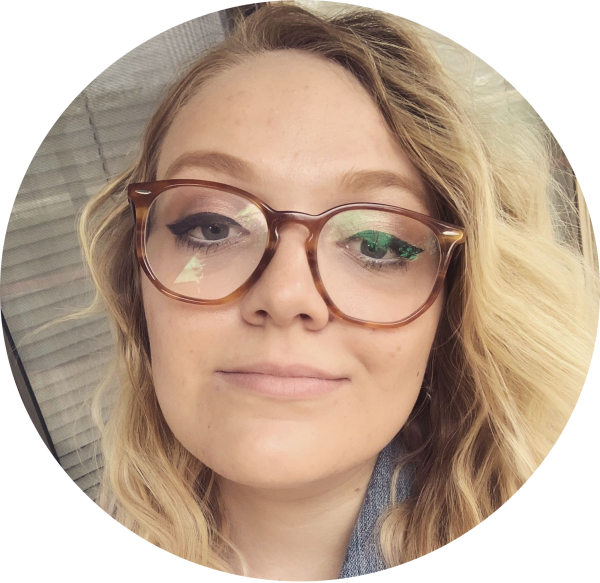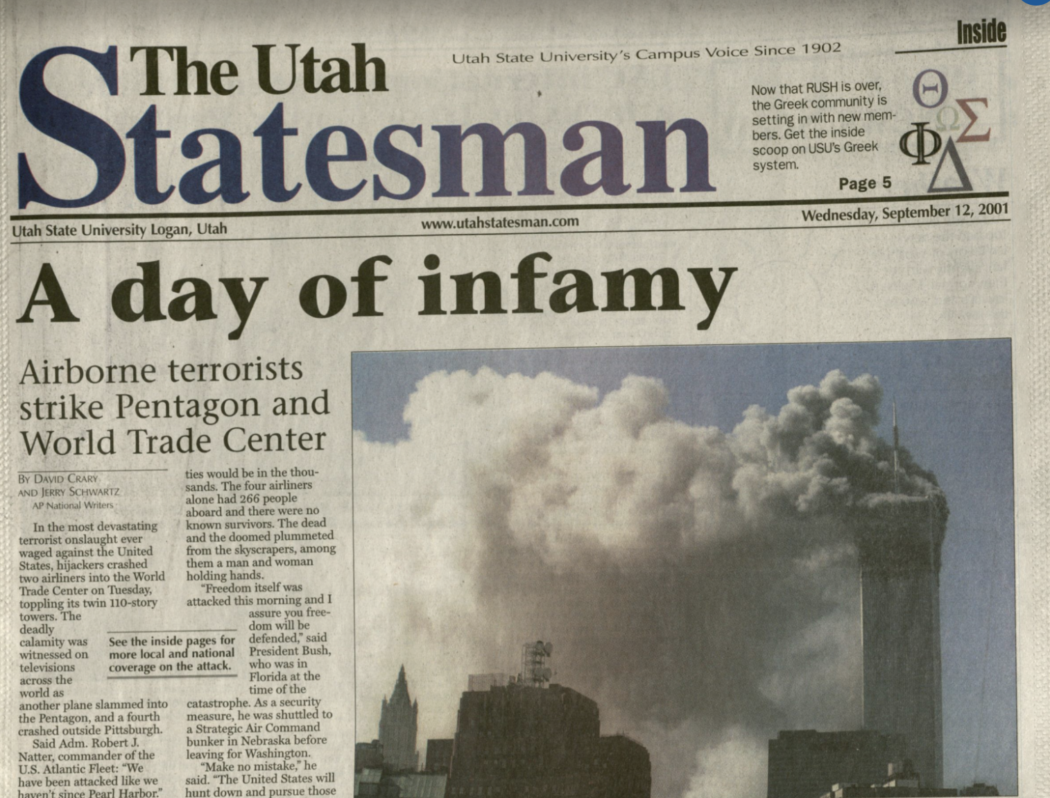Relying on us: student journalists and censorship
Last semester, I spent four months working on a capstone project so I could graduate with a degree in history. I focused on how student journalists covered two major events — the Vietnam War and the War on Terror — and how censorship got in their way. I compared two major schools, Utah State University and Washington University in St. Louis to see if private universities had more censorship.
What I found interesting was the type of university did not necessarily affect censorship, but whether or not the university’s paper was independently run.
I expanded upon the work of Kaylene Dial Armstrong, a Ph.D. student from the University of Southern Mississippi who wrote her dissertation on how student papers covered civil unrest during the civil rights movement. While Armstrong focused primarily on the 1960s and 1970s, I looked at the trials of student journalists in the 21st century and concluded that censorship is nonexistent for students today.
The Utah Statesman has been free from administrative clutches since its inception in 1902. The student-run paper kept Utah State informed during the tumultuous years of free speech movements, civil rights, protests, threats and much more. Originally called Student Life, throughout the 1960s and 1970s the paper was described as “anti-everything” and “slightly liberal” by journalist Jay Wamsley.
“There were fights over whether the paper should be funded at all from student funds,” said Wamsley, “but the paper survived and actually kind of showed me as a newbie that the press doesn’t need to be agreed with, but does need to be a major player in the court of public opinion.”
The editorial staff covered a majority of events during this time, from opinion pieces on the United States’ withdrawal from Vietnam to coverage of riots on campus. In April 1969, a teach-in at Utah State was held so professionals could talk about the Vietnam War. Student Life promoted the anti-war event where professors and ex-servicemen gave speeches and their opinions about time abroad. The paper even posted photographs of protests in Logan. Anti-war articles were plentiful throughout the USU publication.
Another university I looked at was Washington University in St. Louis. As a private university, WashU is susceptible to more censorship by the administration and covers more violent events. As a liberal university in a crime-riddled city, Washington University had a lot on its plate.
In 1970, the Reserve Officer Training Core building on campus burned to the ground following protests-turned-riots of the Cambodian invasion and Kent State killings in Ohio. Campus police stationed outside the building mobilized when students arrived after a strike rally on the quad. The march quickly became violent when a protester hit a photographer in the face with his camera and the crowd started trashing the building with rocks and anything else protesters could get their hands on. The ROTC building was then lit on fire and students burned the American flag inside as they chanted “burn, baby, burn.” The unknown author pointed out the fire department showed up late because firefighters feared for their own safety and “did not know in advance what would happen.”
Soon after this event, U.S. Democrat Senator Frank Moss gave a speech urging students to learn how to “peacefully assemble.” Part of the problem, Moss said, was college administration. Washington University struggled with violent protests because the administration was not putting enough restrictions or punishments on students who were violent. He suggested cutting off individual funding and credited other colleges for their great job at curbing violence. Although threatened, the staff of Student Life never backed down. Washington University was never demanded by their administration to take content down even when the administration expressed concern.
At Brigham Young University, or BYU, students dealt with severe censorship from their administration. As a university of The Church of Jesus Christ of Latter-day Saints, students had to follow a strict honor code and obey the rules of administration. On May 4, 1970, when protests at Kent State University turned violent, BYU President Ernest L. Wilkinson was preparing for a trip to New York. Several days later, he decided to address the killings. Wilkinson urged students to remain calm and resist the “present pandemonium.” He sent the statement to BYU’s official student newspaper, The Daily Universe, the following day. When the university president discovered his statement had not run, he furiously called a conference with the editorial board and made it clear that any statement from that point on was to run “unedited and immediately.”
Earlier in Wilkinson’s tenure, he explained his vision of freedom for The Daily Universe by making it clear the administration was in “full agreement with a policy which provides for a maximum of freedom of expression” with an “accompanying sense of responsibility.” Wilkinson would read the paper every week and send back notes with his concerns, both “trivial and significant.”
Similar to the Vietnam War, student journalists had a lot on their plate when the terrorist attacks on 9/11 marked the start of a long string of wars spanning over a decade.
Utah State’s student-run paper, now under the title The Utah Statesman, covered 9/11 and got the paper together for the following day. “In the most devastating terrorist onslaught ever waged against the United States,” David Crary and Jerry Schwartz wrote, “hijackers crashed two airliners into the World Trade Center on Tuesday, toppling its twin 110-story towers.”
John Zsiray, the Statesman’s current advisor who worked as a photographer during the attacks, said the event affected every student, professor and employee of the university alike.
“It was crazy to be a freshman in the midst of this and watch it all unfold,” Zsiray said. “The TV was on in the newsroom all the time. It was a very emotional time and impacted my entire four years on campus.”
Even by 2009, The Utah Statesman was still covering the War on Terror.
With no administrative interference, Tim Olsen, who worked as a reporter for the Statesman from 2006-2009, said his time on the staff was pleasant.
“We were treated like professionals, both by our advisor and the administration,” Olsen said. “I never felt like we didn’t have access to something because we wrote for the school paper and not the local paper.”
Olsen, who also attended Syracuse in New York as a graduate student, said larger, private universities had difficulty forming these relationships and thus had a harder time covering events. This does not seem to be the case with Washington University, whose coverage of the War on Terror seemed like that of Utah State.
In 2001, only days after the 9/11 terrorist attack, Washington University held a community gathering with speakers to emphasize the “concept of a WU family and students dependence on one another in this time of need.” The gathering concluded with a candlelight vigil and counselors who were ready to help at a moment’s need. Another article emphasized the importance of making the Muslim community feel welcome and to report several WashU students who had already received the “go home, you don’t belong here” treatment.
Kate Talerico’s article for The Atlantic argues student journalists today are finding it harder to secure interviews. Part of this is because of the failure to report on student activism. Like the coverage of the civil rights movement and the Vietnam War, movements for Black Lives Matter, LGBTQ+ rights and much more are still covered by publications.
In 2016, students boycotted the Brown Daily Herald at Brown University for publishing racist opinion pieces. The controversy caused students at the school to refuse to comment. Events like this have happened all over the country.
At the University of Missouri, a professor attempted to stop a student journalist from covering a campus protest. Activists at Smith College in Massachusetts told student journalists they would be “barred from a black-solidarity rally unless they vowed to ‘participate and articulate their solidarity with black students and students of color.”
At Wesleyan University in Connecticut, controversy over an opinion piece resulted in the paper getting its funding cut nearly in half. If the student paper is the hub of all student information, what should occur if students refuse to speak?
That is the problem student journalists face today. Distrust in the media has only grown since the early 2000s and will likely continue to get worse. Without interviews or quotes from protesters, readers will not trust student publications, which means less funding for these independently run newspapers. The problem for student papers has moved from censorship by university administrations to student nonresponse.
So, how should reporters handle nonresponse?
Student journalists need to continue using the skills they have developed over the years to be a voice for the unheard and be respectful to those who will struggle to share. Returning trust to students on campus is important not only for a diverse environment but a well-spoken and well-heard publication. No one knows what lies in the future for student journalists, but one thing is certain: they matter.
 Sydney Dahle is a fourth-year student studying history and political science at Utah State and is currently the Lifestyles Content manager for the Utah Statesman. She hails from St. Louis, Missouri, and spends her free time writing and listening to music.
Sydney Dahle is a fourth-year student studying history and political science at Utah State and is currently the Lifestyles Content manager for the Utah Statesman. She hails from St. Louis, Missouri, and spends her free time writing and listening to music.
—sydney.dahle@usu.edu
@dillydahle

